-
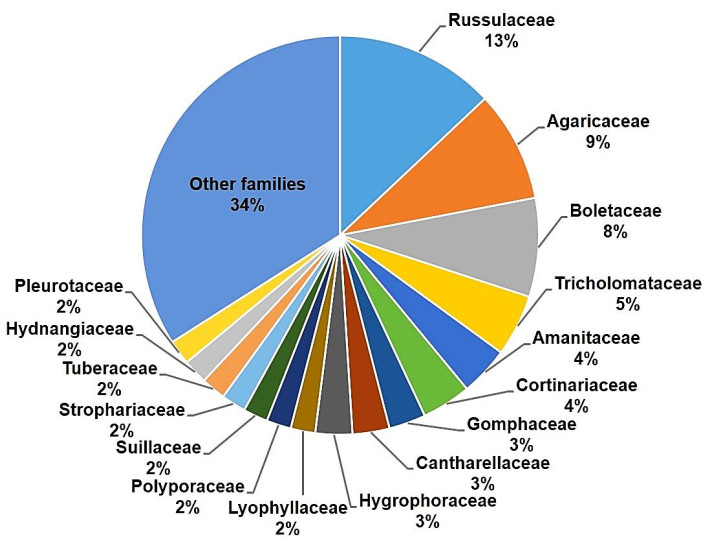
Figure 1. Distribution of families of 2, 100 species of wild edible fungi reported worldwide. Based on data from Boa (2004), Wu et al. (2019) and Pérez-Moreno et al. (2020d)
-
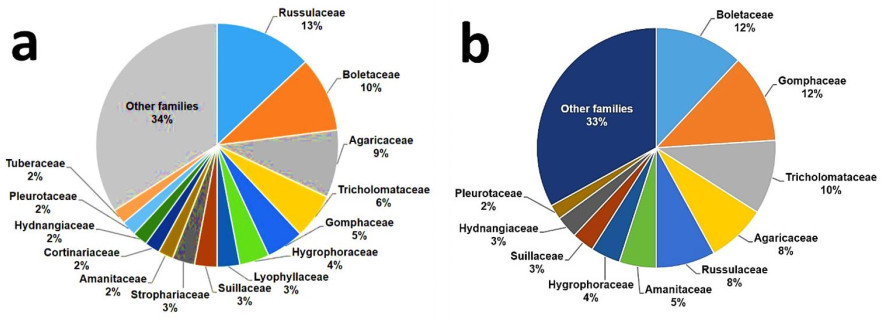
Figure 2. Distribution of families of WEF in the two main biocultural repositories of WEF in the world: 1, 020 species of WEF reported from China among 55 ethnic groups (a) and 450 species from Mexico among 68 ethnic groups (b). Based on data from Wu et al. (2019) and Pérez-Moreno et al. (2020d), respectively.
-

Figure 3. Examples of the diverse range of morphological traits in wild edible fungi. A Amanita basii from pine forests in Central Mexico. B Auricularia auricula-judae from a cloudy subtropical forest in Machu Pichu, Peru. C Boletus reticuloceps in an Abies forest in China. D Terfezia arenaria from a sandy grassland in Morocco. E Tuber indicum from pine forest in Sichuan, China. F Cantharellus cibarius from a mixed broadleaf woodland in Scotland, United Kingdom.
-

Figure 4. a Trophic groups (in percentages) of the 2, 180 known wild edible fungi. b the main cultivated saprophytic mushroom species in the world in relation as a percentage of the total global production (34 billion kg). Percentages were estimated from data presented by Li et al. (2021) and Royse et al. (2017).
-
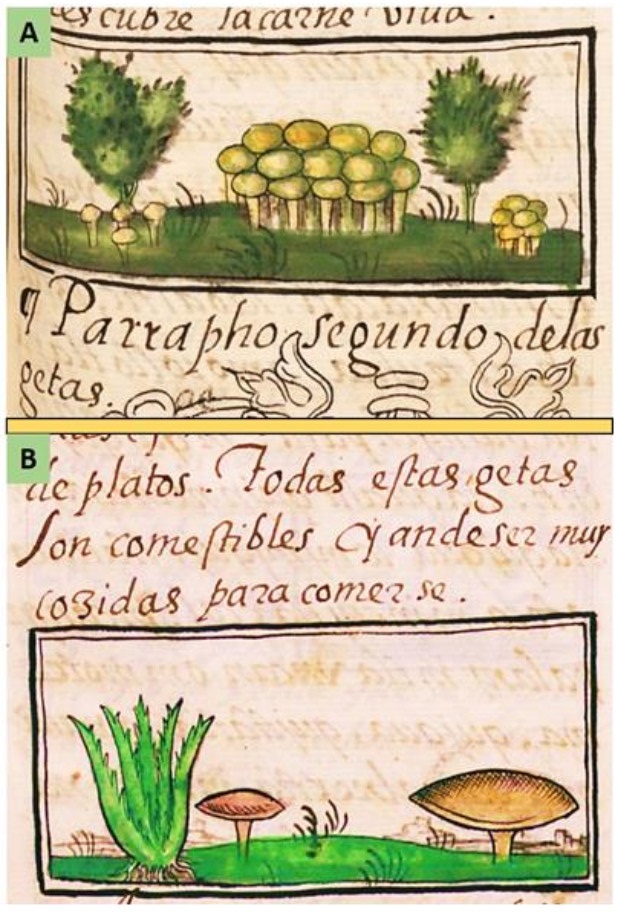
Figure 5. The first paleographic evidence of wild edible mushroom consumption in the Americas can be found in the Florentine Codex (with pictures), written between 1540 and 1577 in Central Mexico by Aztec men and the friar Bernardino de Sahagún, currently held in the Laurentian Library of Florence, Italy.
-
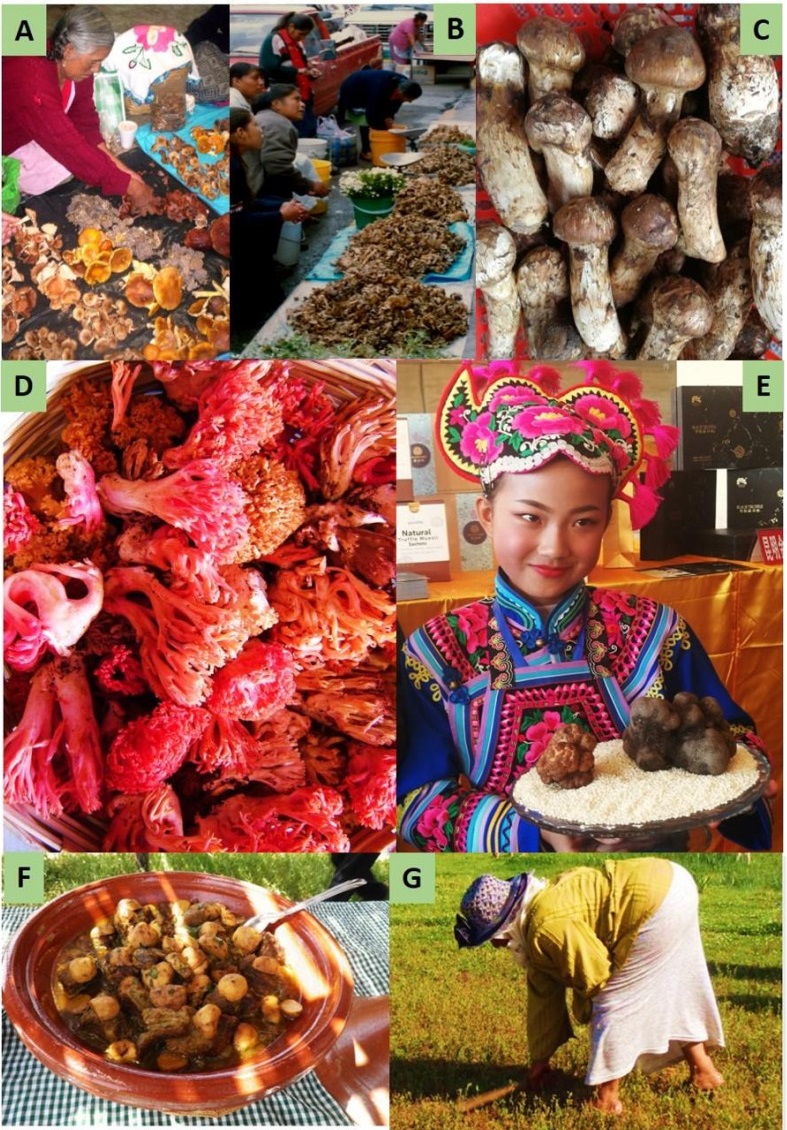
Figure 6. Sociocultural diversity of edible wild mushrooms in different cultures. A Nahua gatherer selling a diversity of mushrooms in Central Mexico. B Lyophyllum decastes marketing by Nahua women in Texcoco, Mexico. C Tricholoma matsutake sale in Ciba Market, Kunming, China. D Ramaria araiospora being sold by Otomi people in Jilotepec, Mexico. E Yi woman holding specimens of Tuber indicum in a truffle festival in Yongren, China. F Tajin with desert truffles (Terfezia arenaria and T. claveryi) in Morocco. G Berber woman collecting desert truffles associated with Helianthemum guttatum in a sandy grassland in Morocco, northern Africa.
-
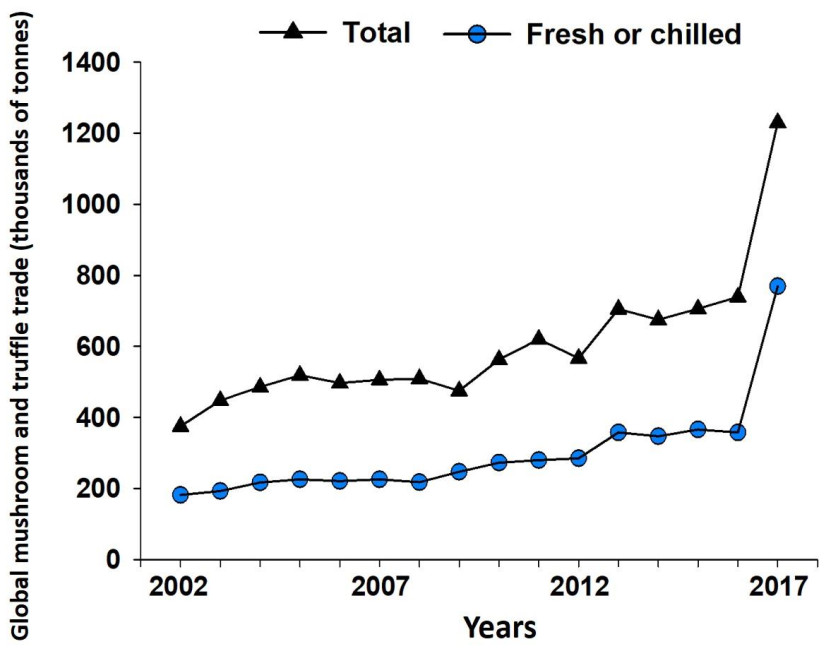
Figure 7. Annual global trade of edible wild mushrooms and truffles from 2002 to 2017. Graph created with data from the United Nations published by de Frutos (2020). "Total" includes the sum of international mushroom and truffle trade indexes labelled with the codes 070959 (truffles and mushrooms fresh or chilled), 071159 (mushrooms, provisionally preserved but unsuitable in that state for immediate consumption), 071239 (mushrooms and truffles, whole, cut sliced, broken or in powder but not further prepared, dried), and 200390 (mushrooms prepared or preserved otherwise than by vinegar or acetic acid). Meanwhile "Fresh or chilled" refers only to international trade labelled with the trade code 070959 (truffles and mushrooms fresh or chilled).
-

Figure 8. Economic relevance of edible mushrooms in different continents. A Mexican gourmet dish with the native "Blue milk cap" (Lactarius indigo). B Chinese gourmet desert with Asian truffles (Tuber indicum); C Vodka aged for 5 years with Cantharellus cibarius s.l. in Russia; D Complex factory of enoki mushrooms (Flammulina velutipes) in Nagano, Japan with an annual production of 300 thousand tonnes. E Specialized store selling Périgord black truffle (Tuber melanosporum) products in Cahors, France. F Hazel and oak tree plantation "Tewnion Truffiere" which produce high quality Périgord Black Truffles in Christchurch, New Zealand.
-
Common Name Scientific name Annual in-season retail market Wholesale price (per kilogram, grade one) Chanterelle Cantharellus cibarius s.l. $1.67 billion $\$$8 to $\$$22 Chinese black truffle Tuber indicum $\$$170milliona $\$$50 to $\$$200b Desert truffle Terfezia spp. and Tirmania spp. Unknownc $\$$27 to 334 Ganbajun Thelephora ganbajun Unknownd $\$$50 to $\$$250 Italian white truffle Tuber magnatum $\$$150 million $\$$1, 000 to $\$$7, 500b Matsutake Tricholoma matsutake s.l. $\$$500 million $\$$30 to $\$$1, 000 Périgord black truffle Tuber melanosporum $\$$150 million $\$$250 to $\$$3, 200b Porcini Boletus edulis s.l. $\$$250 million $\$$13 to $\$$198 Updated from Pérez-Moreno & Martinez-Reyes 2014; aestimation based on an average price of USD 170 provided by Truffle farm (2020) and a production of 1, 000 tonnes (Bin et al. 2021). bBased on retail prices in 2019 in Truffle farm (2020); cmostly sold in Arab countries with no official data available; dmostly sold in domestic markets in Southwestern China, without current accurate estimations of natural production. Table 1. Highly prized wild edible fungi and estimated world trade value in US dollars
Figures
(8)
Tables
(1)